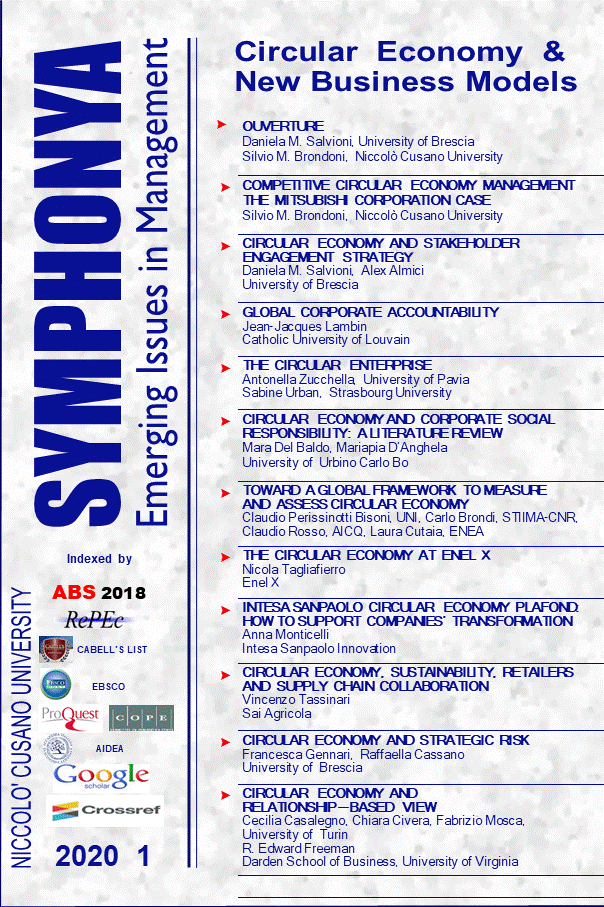Ouverture de ‘Circular Economy & New Business Models’
DOI:
https://doi.org/10.4468/2020.1.01ouvertureKeywords:
Circular Economy, Business Models, Stakeholder Engagement, Sustainability, Competitive Circular Economy, Global Competition, Global MarketsAbstract
Circular economy business models essentially fall into two main groups: (1) models focused on reorienting traditional business, and (2) models that involve creating a new business specifically aimed at recovering resources. The timing and ways of transforming an old business into a circular one could find useful drivers in a systemic approach that involves policy makers and legislators to implement effective regulations and incentives, the financial sector, public authorities and civil society. By converse, big global corporations often develop circular economy within a company’s network. From this perspective, some companies are specifically oriented towards recycling, while other companies belonging to the same group use raw materials obtained from recycling, thus gaining an extensive competitive advantage for all the network’s companies (competitive circular economy).
Downloads
Published
How to Cite
Issue
Section
License
The authors retain all rights to the original work without any restrictions.
License for Published Contents

You are free to copy, distribute and transmit the work, and to adapt the work. You must attribute the work in the manner specified by the author or licensor (but not in any way that suggests that they endorse you or your use of the work).
License for Metadata

Symphonya published articles metadata are dedicated to the public domain by waiving all publisher's rights to the work worldwide under copyright law, including all related and neighboring rights, to the extent allowed by law.
You can copy, modify, distribute and perform the work, even for commercial purposes, all without asking permission.



